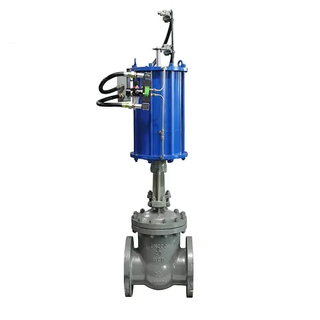In the domain of fluid management systems, the self-actuated pressure regulation valve represents a paragon of ingenuity, efficacy, and dependability. This valve, with its distinctive design and state-of-the-art technology, provides exact and self-directed pressure control across a spectrum of industrial operations, heating, ventilation, and air conditioning (HVAC) setups, and other uses. By integrating the concept of self-regulation with solid engineering practices, self-actuated pressure regulation valves guarantee superior functionality and security in systems that rely on fluid dynamics.
Central to the operation of a self-actuated pressure regulation valve is its innovative self-regulating system, comprising a pressure sensor, a regulatory component, and a valve actuator. The pressure sensor continuously monitors the system's pressure levels, relaying this information to the regulatory component as feedback. Utilizing this feedback, the regulatory component fine-tunes the valve actuator's position to regulate the fluid flow, thus sustaining the target pressure level.
| Type |
Single-seat, double seat, sleeve |
Nominal diameter |
1/2-12 Inch |
| Nominal pressure |
Class 150-400 LB |
Connection |
Flange, thread, weld (Or other customer specified) |
| Structure |
Standard type (-20℃ -+200℃ ) |
Material |
WCB, 304, 316, 316L |
| Cooling type |
(-40-450℃ ) |
Low-temperature type |
(-60℃ --196℃ ) |
| Packing |
V type PTFE, flexible graphite |
Adjustable range |
50:01:00 |
Advantages
• Self-actuated pressure regulation valves operate without the need for external power or intricate control systems. They leverage the fluid's pressure to manage flow rates and uphold pressure levels, which minimizes the system's dependence on external elements and boosts reliability.
• By dynamically adjusting to pressure fluctuations and modifying flow rates accordingly, these valves contribute to the optimization of energy consumption and curtail operational expenditures within fluid systems.
• Thanks to their sturdy construction and intrinsic self-regulating capabilities, self-actuated pressure regulation valves provide steadfast performance across diverse operating scenarios. They ensure consistent pressure management and safeguard the system.
• These valves are exceptionally flexible and can be tailored to fit the unique demands of different applications, rendering them well-suited for a broad spectrum of fluid control challenges.




